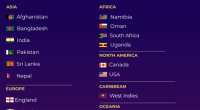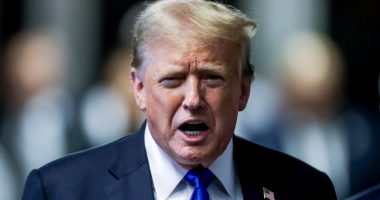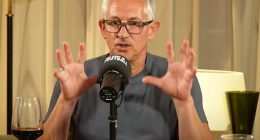
Iran’s recent history is a rollercoaster of contrasts, alternating between hope and despair, traditions and modernisation, revolutions and counterrevolutions, conservatism and reformism.
The country is once again on the verge of an historic moment as it prepares for a June 28 snap presidential election, following the death of President Ebrahim Raisi in a helicopter crash last month.
This election, forced upon the state, will likely reveal the Iranian establishment’s future plans for the country.
Is the political establishment willing to ease internal social and political tensions and open up to the world, or will it prefer to maintain the growing schism between the Iranian populace and the state at home, while continuing confrontational policies abroad?
If it chooses the former, then we may see a period that focuses on governance and normalisation after what has been a divisive few years inside Iran. However, if the latter occurs, then the legitimacy crisis Iran has experienced will linger on, fuelled by unresolved domestic grievances, and forcing the state to continue to focus on managing crises.
The president who emerges from this electoral process will provide a partial answer as to what the outcome will be.
Beyond the supreme leader
The Iranian political structure, based since the 1979 Islamic Revolution on the concept of Velayet-e Motlaqaye Faqih – the absolute guardianship of the Islamic jurist – is one of the most multi-layered systems in the world.
In this system, the Vali-e Faqih, or the guardian of Islamic jurists (now Ayatollah Ali Khamenei) is the supreme leader, and has constitutional authority over public, state and religious affairs. According to this political theology, the supreme leader is in charge of guarding the state until the return of the 12th divinely ordained Shia imam (Imam al-Mahdi, also known as the Hidden Imam), whom the majority of Shia Muslims believe has been in occultation since the year 874.
In Iran, the supreme leader theoretically has the ultimate say in state affairs, and a lot of power is centralised in his hands. But that does not mean that there is a monopoly over power, and there are other power centres with significant sway.
The first layer of the power structure is the legislature, the judiciary, and the executive. None of these power centres can be considered merely “symbolic”. Instead, each possesses substantial influence and leverage over the others, sometimes leading to power struggles. However, these do not paralyse the system, because of the role played by the second layer of the power structure: the assemblies and councils.
The supreme leader, the legislature, the judiciary and the executive appoint the majority of the members of these assemblies and councils, with the remainder elected by the public. These numerous assemblies and councils, such as the Assembly of Experts, the Supreme National Security Council, the Expediency Discernment Council of the System, the Guardian Council, and many others, function like a parallel state, intervening in state affairs when disagreements or crises arise among the institutions.
The distribution of members from the various political currents accepted by the state within these institutions determines the country’s power balance. In many cases, such as national security and sensitive regional policies, as well as nuclear activities, councils and assemblies are far more active and in charge than the government and parliament – although their power still rests below that of the supreme leader.
The Islamic Revolutionary Guard Corps (IRGC), an elite Iranian armed force with control over advanced weapons and large investment projects in various business fields, is another layer of the establishment that has a significant effect on Iran’s regional and international policies.
The Revolutionary Guards and its paramilitary volunteer militia, the Basij, wield enormous power over Iranian politics and decision-making processes. IRGC retired generals frequently enter politics, holding executive positions in parliament and banks, as well as running for president or supporting a specific candidate. In many cases, that support determines a candidate’s election victory.
Another layer in Iran’s power structure is the business circles. The majority of the families in this group were promoted and given privileges during Hashemi Rafsanjani’s presidency, shortly after the Iran-Iraq war in the 1980s, which wrecked the country’s infrastructure and manufacturing capacity. This class was relied upon to lead post-war reconstruction, resurrect the collapsed economy and incentivise industrial production. It has a growing influence on Iranian politics.
And then there are the Muslim leaders, the majority of whom receive their education and religious degrees from the country’s largest Islamic seminary in the city of Qom, and enjoy some influence in decision-making.
Leading the presidential race
Several heavyweight names from various political currents have submitted their applications to run for president. But it will be up to the Guardian Council, a 12-member body of jurists – half of whom are appointed by the supreme leader and half by parliament – to approve their candidacy by June 11. Consensus and power struggles among the institutions and groups mentioned above will influence the Guardian Council’s decision, making it difficult to predict.
Ali Larijani is one of the frontrunners and is believed to have a strong chance of success if turnout is high and reformists participate in the vote.
A moderate conservative, he is often seen as a pragmatist. Larijani comes from a prominent family of Muslim scholars whose members have been in influential positions since the 1979 revolution. He, himself graduated from the Qom religious seminary and holds a bachelor’s degree in science and a PhD in Western philosophy. Larijani currently serves as a member of the Expediency Discernment Council (an advisory body) and was speaker of parliament from 2008 to 2020, as well as holding positions within the security establishment.
The Guardian Council disqualified him from running for president in 2021, but many believe the supreme leader has given his approval this time. Widely perceived as a flexible politician who may re-engage with nuclear negotiations with the West, a Larijani candidacy would appeal to voters in both the conservative and reformist camps, making him a strong candidate.
But Larijani’s relative popularity among conservatives and reformists may lead to a difficult balancing act, as he, on the one hand, has to remain loyal to the establishment and also promise change to appeal to the reformists, at a time when antigovernment sentiment is still strong after protests in 2022.
Another member of the Expediency Discernment Council is Saeed Jalili, a hardline conservative politician whose victory in the presidential election would signify a very different course to a Larijani win. A popular figure among conservatives, the former nuclear negotiator has strong ties with the supreme leader and the Revolutionary Guards, and is perceived as a staunch loyalist.
Jalili has failed in his bid for the presidency before, having lost in 2013 to Hassan Rouhani. In 2021 he withdrew from the election in favour of Raisi, a fellow conservative. If Jalili were to become president he is expected to continue with Raisi’s policies, owing to the close relationship between the two men, and what is widely perceived to have been Jalili’s influence on the former president’s decisions.
A low turnout election would work in Jalili’s favour, as it would likely mean that reformists have decided to sit the election out, leaving conservatives – Jalili’s main constituency – to dominate the voting booths.
Outside of Larijani and Jalili, there are two other candidates worth mentioning.
Mohammad Bagher Ghalibaf is a moderate conservative and the current speaker of the Iranian Parliament. Previously Tehran’s mayor from 2005 to 2017 and perceived as a technocrat, he also has extensive ties to Iran’s security apparatus, having previously been appointed commander of the Revolutionary Guards’ Air Force, as well as chief of police.
Among those in the presidential race, Ghalibaf is regarded as the most closely aligned with the IRGC. Ghalibaf is also known to be close to Khamenai. These connections greatly improve his chances of winning the election. However, his presidential campaign will be far from smooth, as he is frequently targeted by media outlets affiliated with Jalili and ultra-conservative circles.
Eshaq Jahangiri is the only prominent reformist candidate who filed his application to run for president. He served as the first vice president under Hassan Rouhani’s government from 2013 to 2021. Before that, Jahangiri was the minister of industries and mines from 1997 to 2005 under the first reformist president of the Islamic republic, Mohammad Khatami. He was also a member of the reformist Mir-Hossein Mousavi’s presidential campaign in 2009, which ended in a disputed election but led to the Green Movement protests.
Jahangiri has consistently supported reformist or moderate-centrist politicians throughout his political career. Despite some hoping he potentially could unite reformists, he has never openly and directly opposed the political establishment. The reformists continue to lack unity, a comprehensive narrative to define their position, and a strong figure to lead them, leaving them clearly fragmented.
Jahangiri’s only chance is in Iran’s factional politics. If the hardline conservative Saeed Jalili leads in the polls, reformist voters may mobilise to support Jahangiri, to prevent Jalili from winning the election.
Much rests on the turnout for the presidential election. High turnouts have traditionally been the primary source of public legitimacy for the political establishment in Iran. But the record-low turnouts in the past two elections have been a pressing concern among the ruling elite. And while the state has been largely able to quash the antigovernment protests that began in 2022, many Iranians are unwilling to give the Islamic republic legitimacy by participating in the elections.
To avoid a legitimacy crisis, the system will likely seek to manufacture a seemingly competitive race so that there will be several candidates on the ballot to generate public support and secure a high turnout.
However, the candidates permitted to run will be loyal to the system of the Islamic republic. And in reality, with no change in supreme leader and the role of the IRGC still dominant, the outcome of the race and the figure who emerges as the winner cannot be expected to significantly alter the country’s domestic and international policies. Iran’s political system is entrenched – and those on the inside are not willing to let go of power.
Read More: World News | Entertainment News | Celeb News
Aljazera









